Generating Off-Grid Power – The Four Best Ways
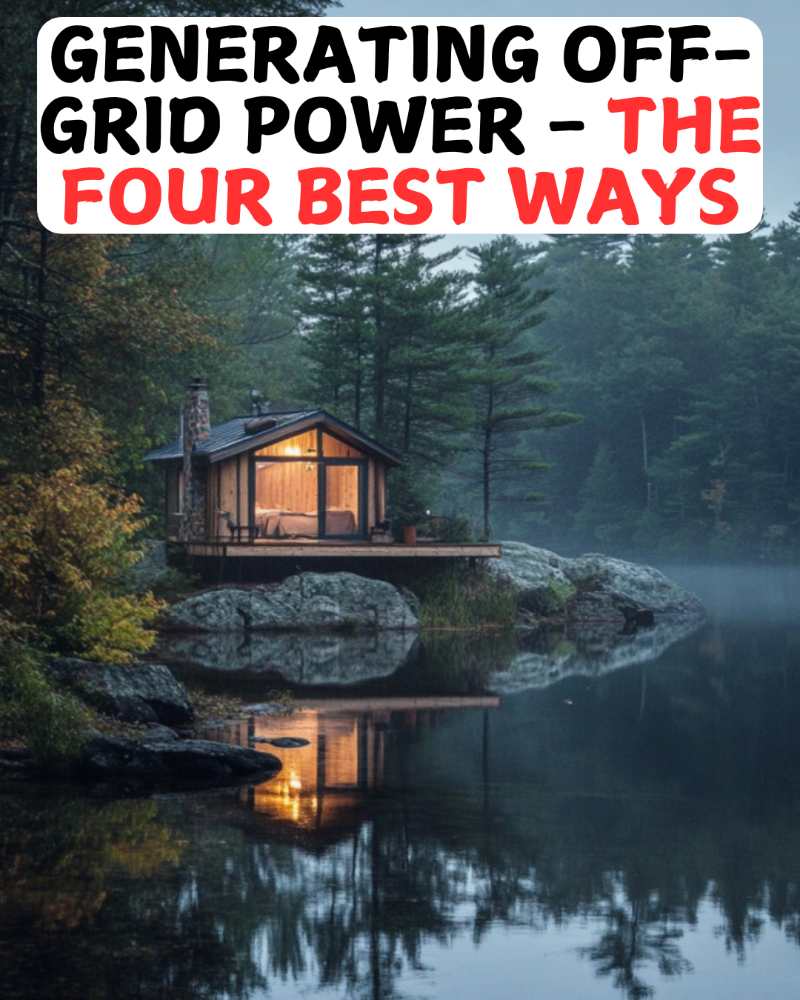
Make sure to like Living Green and Frugally on Facebook, Shop at Amazon to help support my site and explore our PINTEREST BOARDS for innovative ways you can become self-sufficient.
As the world becomes more focused on sustainability and energy independence, generating off-grid power has become a key interest for many. Whether you’re looking to reduce your carbon footprint, save money, or simply want the security of being independent from the grid, there are several effective ways to generate your own power. In this guide, we’ll explore the four best off-grid power generation methods, offer step-by-step instructions, and answer common questions to help you find the right solution for your needs.
Why Generate Your Own Off-Grid Power?
Living off-grid means relying on your own energy sources rather than traditional utility companies. This setup is ideal for homesteaders, RVers, remote locations, or those wanting a more eco-conscious lifestyle. While it might sound complex, advancements in technology have made it easier than ever to harness natural energy sources.
The Four Best Ways to Generate Off-Grid Power
Solar Power
- How it works: Solar power harnesses the energy of the sun using photovoltaic (PV) panels. These panels convert sunlight into electricity, which can be stored in batteries for later use.
- Setting it up:
- Calculate your energy needs by evaluating the wattage of appliances you plan to power.
- Install solar panels in a location that gets maximum sunlight exposure (usually on roofs or in open spaces).
- Use a charge controller to regulate the energy going into your batteries.
- Install an inverter to convert the stored DC power into AC power for home use.
- Best for: Sunny regions with clear skies.
- Tip: Regularly clean your solar panels to ensure maximum efficiency.
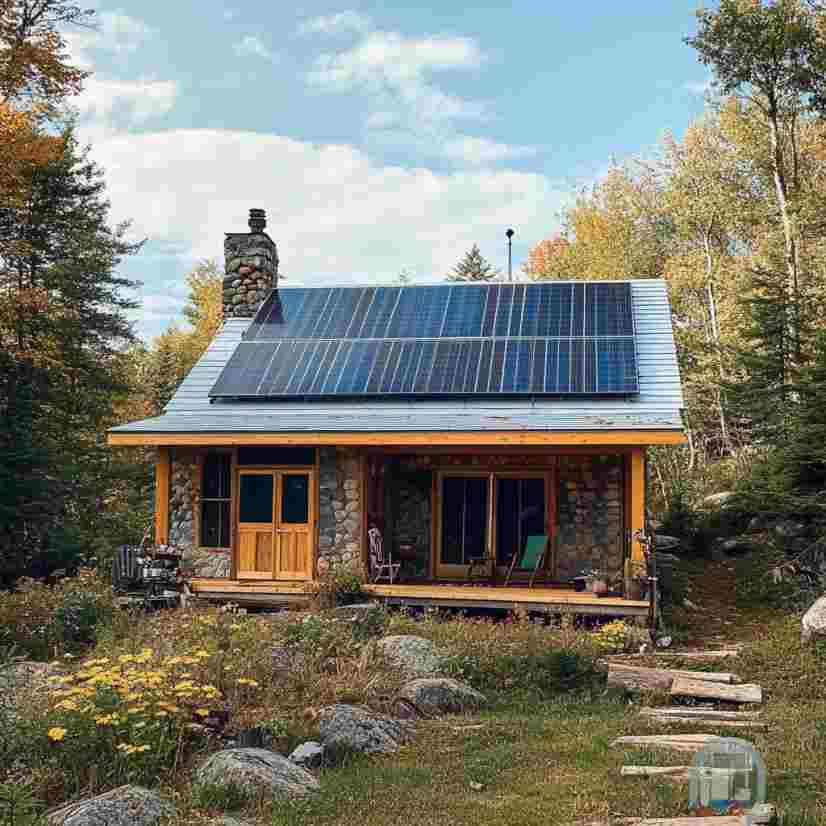
Wind Power
- How it works: Wind turbines capture the kinetic energy from wind and convert it into electricity. Turbines are typically placed on towers to access stronger, more consistent winds.
- Setting it up:
- Choose a site with reliable wind speeds (usually 10-12 mph or higher).
- Install the wind turbine on a tall tower for best results.
- Use a wind controller to manage the electricity produced and prevent overcharging batteries.
- Pair with an energy storage system (batteries) to ensure power during calm days.
- Best for: Windy areas like coastal regions, open plains, or hilltops.
- Tip: Consider combining wind and solar for a more consistent power supply.
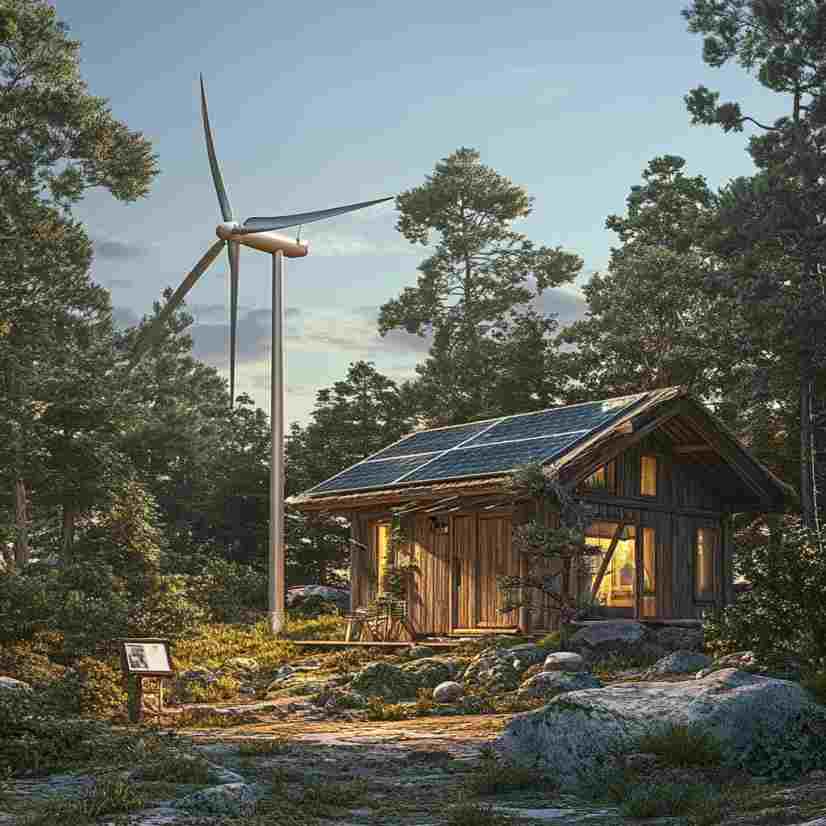
Hydropower
- How it works: Hydropower uses flowing water to generate electricity. This is usually done by diverting a portion of the water through a turbine, which spins to generate power.
- Setting it up:
- Locate a consistent water source, such as a river, stream, or large creek.
- Install a small turbine in the water flow, ensuring you’re not harming the ecosystem or violating any local regulations.
- Connect the turbine to a battery storage system and inverter.
- Ensure you have a steady, year-round water flow to keep the power system running.
- Best for: Properties near reliable water sources.
- Tip: Use a water diversion system to increase flow to your turbine without affecting the natural water course.
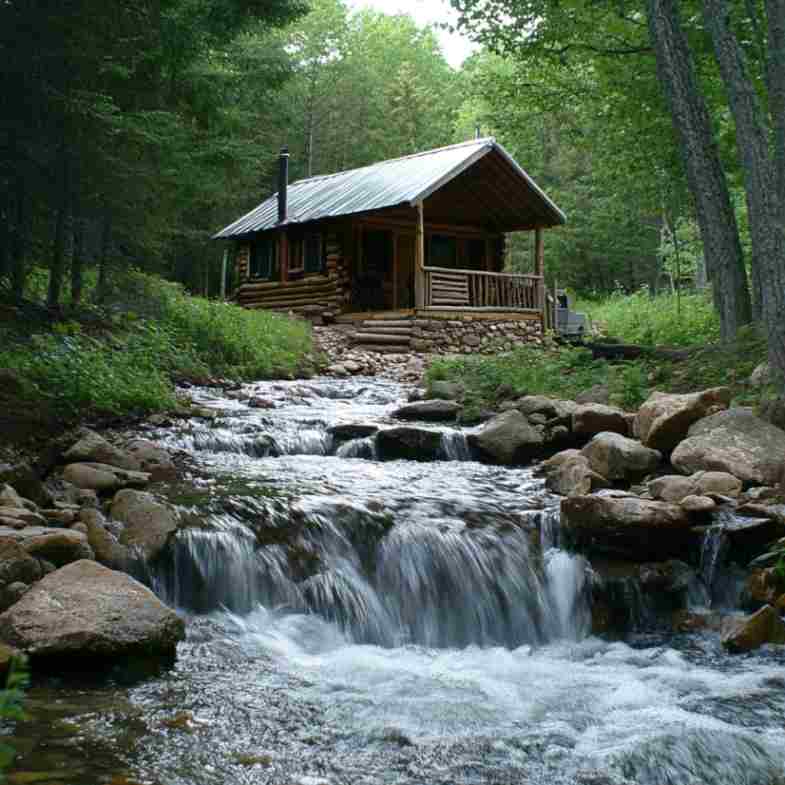
Biomass Power
- How it works: Biomass involves converting organic materials (like wood, agricultural waste, or even certain types of garbage) into energy through combustion or gasification.
- Setting it up:
- Build or purchase a biomass generator or gasifier.
- Gather or grow fuel sources (such as wood, corn husks, or other organic waste).
- Set up a system to burn or gasify the material, which produces heat and electricity.
- Best for: Homesteads with access to forests, farms, or organic waste.
- Tip: Make sure to have a consistent and sustainable source of biomass to keep your system running long-term.
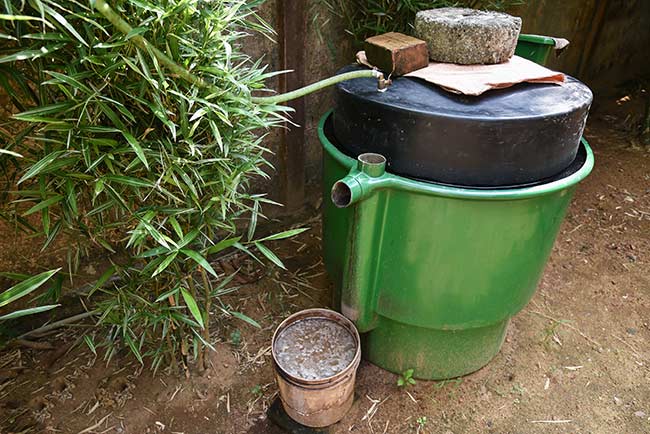
FAQs About Generating Off-Grid Power
1. Can I combine multiple power sources?
Yes! Many off-grid homeowners use hybrid systems that combine solar, wind, and even hydropower. This helps ensure a constant power supply even if one source isn’t available (such as during a cloudy or windless day).
2. How much does it cost to set up off-grid power?
The cost depends on the system you choose. Solar power systems range from $5,000 to $30,000 or more, while wind turbines can cost between $10,000 to $70,000. Hydropower setups are typically less expensive, while biomass systems depend on your access to organic material.
3. Do I need batteries?
Yes. Batteries are essential for storing energy for times when your primary power source isn’t generating electricity (such as night time for solar). The size of your battery bank will depend on your energy consumption and how long you want backup power to last.
4. Can I live entirely off-grid with these systems?
Absolutely! Many people successfully live off-grid using a combination of solar, wind, and hydropower. However, having a backup system (like a generator) is often recommended in case of extended periods without natural energy.
5. How do I maintain my off-grid power system?
Maintenance involves regularly checking and cleaning your equipment. Solar panels should be kept clean and free of debris, wind turbines need lubrication and inspection of moving parts, and hydropower systems should be cleared of any blockages in the water flow.
Final Tips for Success
- Do your research. Before committing to a particular off-grid power method, thoroughly assess your property’s natural resources.
- Start small. If you’re new to off-grid living, start with a single power source and gradually expand as you become more comfortable with managing your system.
- Have a backup plan. Even with the best systems in place, unexpected weather or mechanical issues can happen. Consider having a backup generator or additional battery storage.
Conclusion
Generating your own off-grid power is not only achievable but also empowering. By harnessing the sun, wind, water, or organic materials, you can gain energy independence while reducing your environmental impact. Whether you choose solar power for its simplicity, wind power for its consistency, hydropower for its reliability, or biomass for its sustainability, the future of off-grid living is bright.